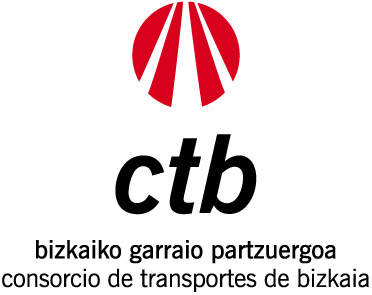frequency band
- Teknologia orokorra
- es banda de frecuencia
- eu frekuentzia-banda; maiztasun-banda
- fr bande de fréquence
frequency band
- ca banda f de freqüències
- de Frequenzband n
- es banda f de frecuencias
- eu maiztasun-banda
- fr bande f de fréquences
- gl banda f de frecuencias
- it banda f di frequenza
- pt banda f de frequências
frequency band
- ^ Frequency-division duplexing (FDD); time-division duplexing (TDD); FDD supplemental downlink (SDL); FDD supplemental uplink (SUL)
- ^ UE transmit; BS receive
- ^ UE receive; BS transmit
- ^ Supported channel bandwidths depend on the Subcarrier Spacing (SCS) in use
- ^ a b c d e f g h i j k l m n o Downlink only
- ^ a b Uplink restricted to 1627.5–1637.5 MHz and 1646.5–1656.5 MHz
- ^ Downlink restricted to 1526–1536 MHz
- ^ a b c d e f g h i Carrier aggregation and downlink only
- ^ Duplex Spacing
- ^ a b c Carrier aggregation or dual connectivity only
- ^ a b c 5G NR Unlicensed
- ^ Downlink between 2180–2200 MHz restricted to intra-band Supplemental Downlink
- ^ a b c d e f g h Supports asymmetrical bandwidth combinations
- ^ Technologically identical to n41 but requires UL rasterization to allow for DSS
- ^ a b c d Variable duplex operation is used such that the Downlink and Uplink frequency ranges are supported independently in any valid frequency range for the band
- ^ a b Uplink only
- ^ Time-division duplexing (TDD) mode
- ^ Supported channel bandwidths depend on the Subcarrier Spacing (SCS) in use
- ^ 5G NR Unlicensed
- ^ Frequency-division duplexing (FDD); time-division duplexing (TDD); FDD supplemental downlink (SDL); FDD supplemental uplink (SUL)
- ^ UE transmit; BS receive
- ^ UE receive; BS transmit
- ^ Supported channel bandwidths depend on the Subcarrier Spacing (SCS) in use
- ^ Frequency-division duplexing (FDD); time-division duplexing (TDD); FDD supplemental downlink (SDL); FDD supplemental uplink (SUL)
- ^ UE transmit; BS receive
- ^ UE receive; BS transmit
- ^ Supported channel bandwidths depend on the Subcarrier Spacing (SCS) in use
- ^ "TS 38.101-1: NR; User Equipment (UE) radio transmission and reception; Part 1: Range 1 Standalone". 3GPP (19.0.0.0 ed.). 2025-01-23. Retrieved 2025-02-24.
- ^ "TS 38.101-2: NR; User Equipment (UE) radio transmission and reception; Part 2: Range 2 Standalone". 3GPP (18.8.0 ed.). 2025-01-23. Retrieved 2025-02-24.
- ^ "Rohde & Schwarz enables Qualcomm to pioneer new frequency ranges for future 5G-Advanced and 6G networks" (Press release). Munich: Rohde & Schwarz. 2024-02-15. Retrieved 2024-09-25.
- ^ "TS 38.101-5: NR; User Equipment (UE) radio transmission and reception; Part 5: Satellite access Radio Frequency (RF) and performance requirements". 3GPP (18.8.0 ed.). 2025-01-23. Retrieved 2025-02-24.
- ^ "3GPP specification series: 38series". 3GPP. Retrieved 2019-02-22.
- ^ The Telecommunications Handbook: Engineering Guidelines for Fixed, Mobile and Satellite Systems - Table 13.1 FDD frequency bands. John Wiley & Sons. 2014-12-11. p. 437. ISBN 9781118678909. Retrieved 2022-07-10.
- ^ a b c "C-Band 5G: What is it and where is it available?". androidauthority.com/. 2022-01-25. Retrieved 2022-07-10.
- ^ a b c "AT&T Runs More Low-Band Tests in the US". Light Reading. 2019-07-30. Retrieved 2022-07-10.
- ^ a b c "C-Band National Spectrum Positions: October 2020". GSMA. 2020-10-01. Retrieved 2022-07-10.
- ^ a b c "ITU News: Latest from the UN agency for digital technologies".
Wikipediako bilaketara joan
SARRERA DESBERDINA:
5G NR frequency bands
Frequency bands for 5G New Radio (5G NR), which is the air interface or radio access technology of the 5G mobile networks, are separated into two different frequency ranges. First there is Frequency Range 1 (FR1),[1] which includes sub-6 GHz frequency bands, some of which are traditionally used by previous standards, but has been extended to cover potential new spectrum offerings from 410 MHz to 7125 MHz. The other is Frequency Range 2 (FR2),[2] which includes frequency bands from 24.25 GHz to 71.0 GHz. In November and December 2023, a third band, Frequency Range 3 (FR3),[3] covering frequencies from 7.125 GHz to 24.25 GHz, was proposed by the World Radio Conference; as of September 2024, this band has not been added to the official standard. Frequency bands are also available for non-terrestrial networks (NTN)[4] in both the sub-6 GHz and in the 17.3 GHz to 30 GHz ranges.
From the latest published version (Rel. 18) of the respective 3GPP technical standard (TS 38.101),[5] the following tables list the specified frequency bands and the channel bandwidths of the 5G NR standard.
Note that the NR bands are defined with prefix of "n". When the NR band is overlapping with the 4G LTE band, they share the same band number.






